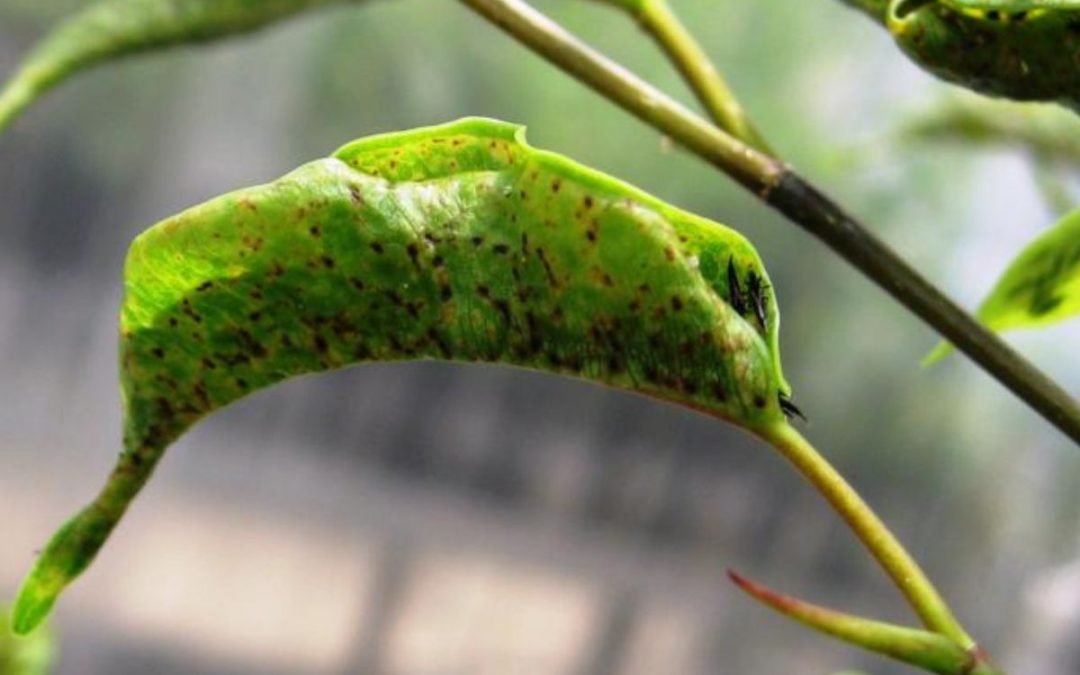Thrips Removal: Control and Prevention
Do you get the feeling that something is draining the vitality out of your plants?
Some insects feed on the leaves of your plants by piercing and sucking the vitality out of them. As a consequence, the leaf surface becomes discolored or unappealingly flecked, and the flower hesitates to continue blossoming. That is not what anybody wants.
A thrips is one such bug.
Let’s learn more about this plant-sucking bug and how to avoid thrips to preserve your valuable plants.
What exactly are Thrips?
Thrips are tiny yellow-brown or black insects that live on flowers in the summer. Most of these insects are as thin as a needle and less than 5 millimeters long. They all have one thing in common: they want the sap from your plant.
Despite the fact that many thrips have wings, they are frequently hesitant flyers until there is a rainstorm. They will then take flight in large numbers, which is why they are also known as thunderflies. Furthermore, thrips are seldom seen alone; being highly gregarious animals, they are frequently found in groups.
Life Cycle of Thrips
Because there are over 6,000 kinds of thrips worldwide, the precise thrips life cycle is determined by the species, as well as the area and host plant.
Adults, on the other hand, overwinter in plant bark, trash, or other substances. They become active in early spring and cut slits in leaf tissue to deposit their eggs. A female may lay up to 50 eggs at a time. Three to five days later, the eggs hatch, and the larvae feed on the sap of your plant.
Baby thrips develop swiftly to maturity and may breed within three weeks, allowing populations to grow quickly.
While thrips adults have a one-month lifespan, they may produce up to 15 generations each year in the wild, ensuring that thrips are present throughout the growing season.
Thrips Identification
Thrips management begins with understanding how to identify these pests.
Many thrips species prefer to feed inside plant buds or curled leaves, making them difficult to identify. Furthermore, since they are so little, they might be difficult to see until infestations grow rather substantial.
If you suspect thrips, insert a piece of white paper beneath the plant’s leaves or blossoms and shake it. If you have thrips on your plant, some may fall off, revealing their black, slender bodies on the white paper.
Thrips Damage: How Does Thrips Damage Appear?
Yellow or bleached blotches on your plant’s leaves are usually the first symptom of a thrips infection. Deformed leaves or splotches on flower petals are also possible.
Thrips leaf damage appears as the infestation progresses, with a silvery thin appearance and black dots. This is the conclusion of thrips draining plant sap from the leaves and then excreting it.
Thrips damage on plants progresses to the point where the leaves and petals become so thin that they wilt, die, and eventually fall off the plant.
Thrips’ Most Commonly Affected Plants
Thrips eat woody plants, flowers, fruits, and trees that provide shade. Some of the most typically affected are:
- Dogwood Azalea
- Gardenia
- Hibiscus
- Iris Rose Gladiolus Magnolia Maple Viburnum Impatiens Chive Fig Iris Rose Gladiolus
Thrips Prevention and Control
Because thrips damage might seem similar to that of mites or lace bugs, it’s critical to identify thrips before taking action.
Learning how to avoid thrips starts with keeping plants wet, since thrips are attracted to plants that are too dry.
Early identification and monitoring are critical in this situation. This implies that you monitor your plants on a regular basis for thrips and take action only if you correctly identify and detect their existence and damage.
Thrips Removal Method
Thrips management entails employing insecticidal soaps and low-toxicity contact pesticides after these pests have been identified. Always read and follow label guidelines when applying pesticides, and only use chemicals that are expressly designated for the insect and plant that requires treatment. Soaps may harm plants and blossoms, particularly in hot weather. Before using, carefully read all label directions.
Unfortunately, since thrips eggs are sheltered in plant leaves and their life cycles are short, thrips pest treatment may be necessary throughout the growing season. Contacting a trained landscaping and tree care specialist who can correctly identify and target the pest may also provide you with a more rapid plan of action and help you avoid any extra and needless plant damage.


